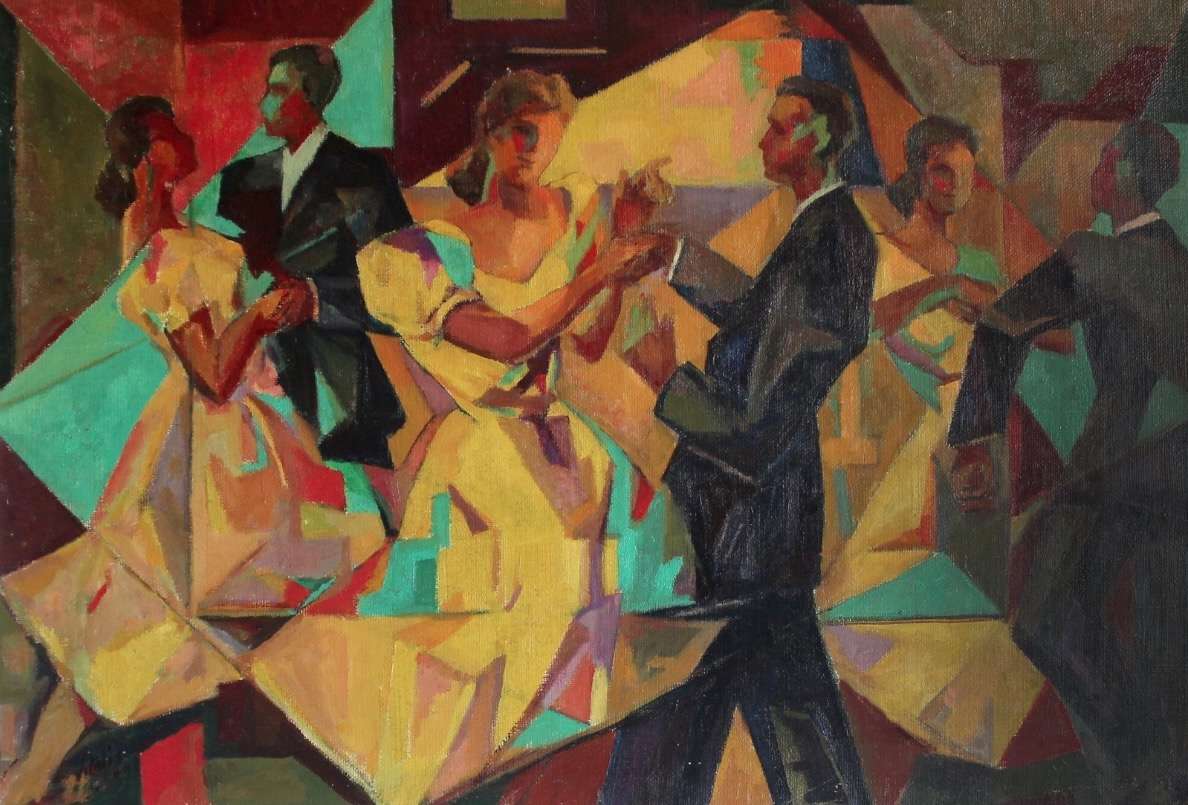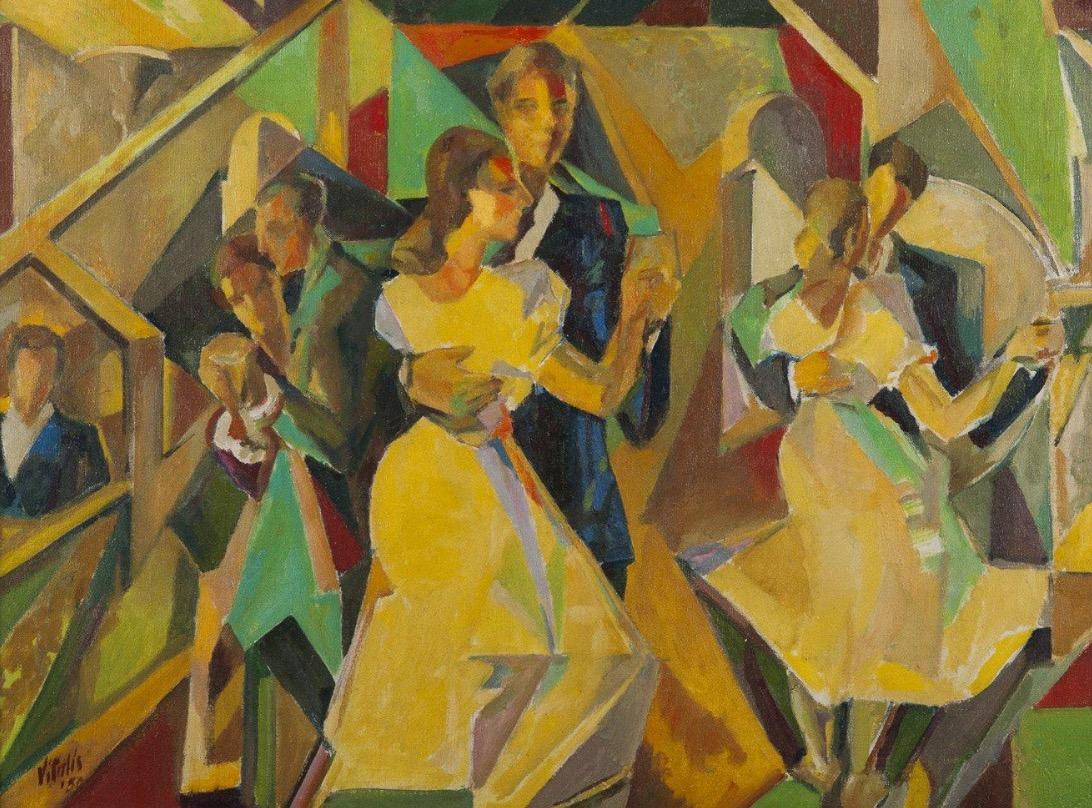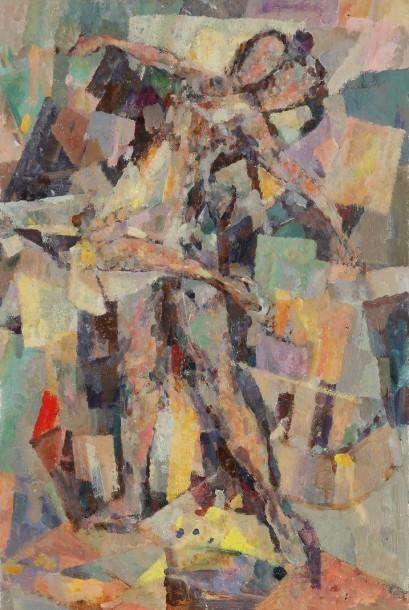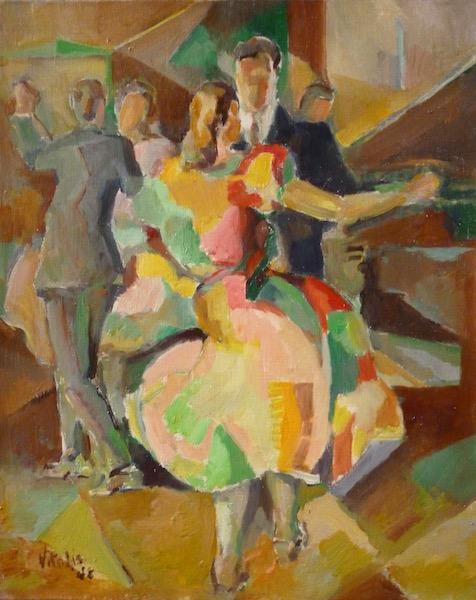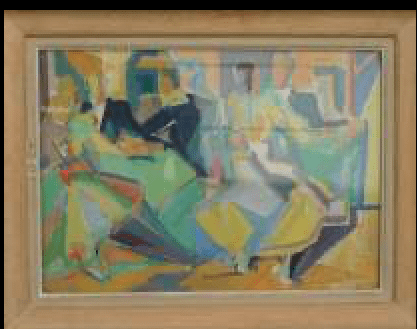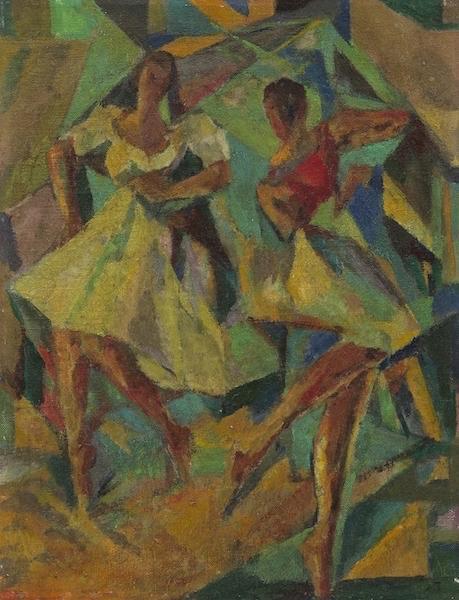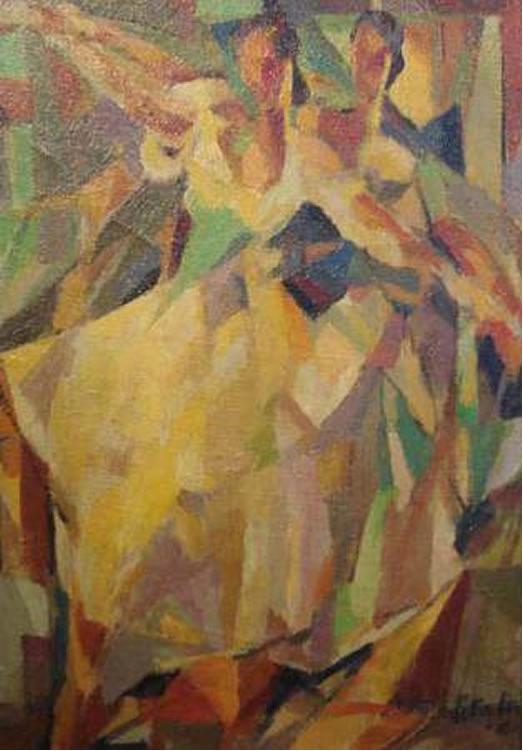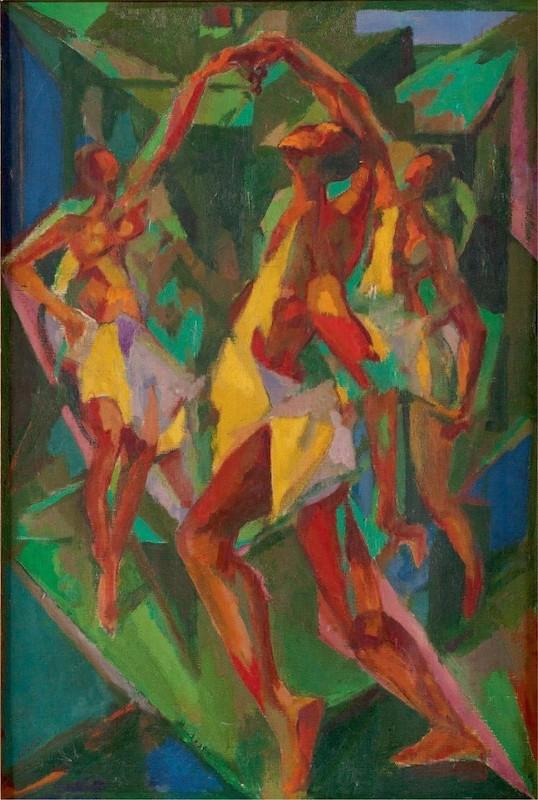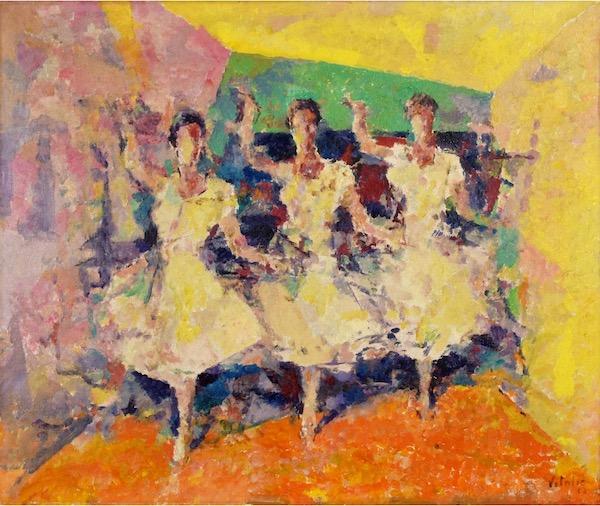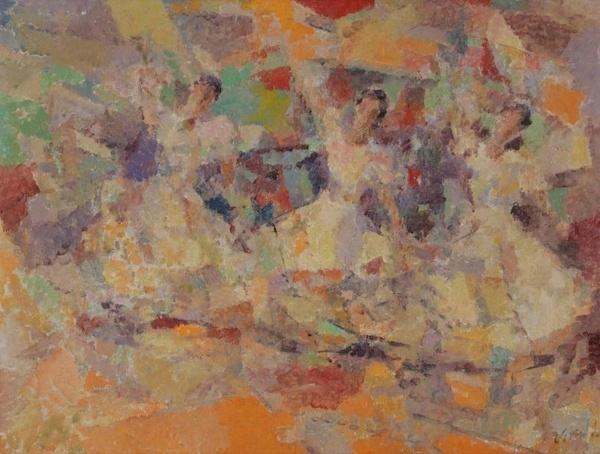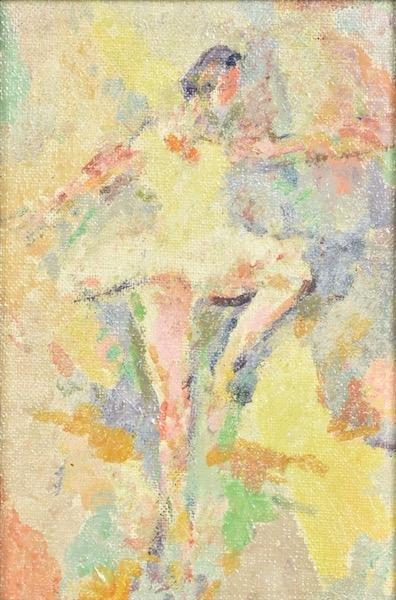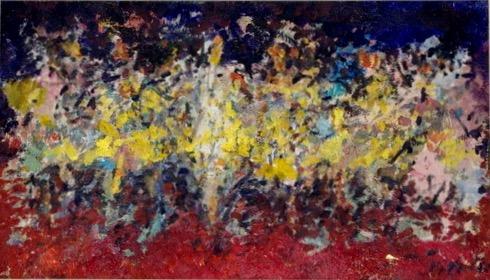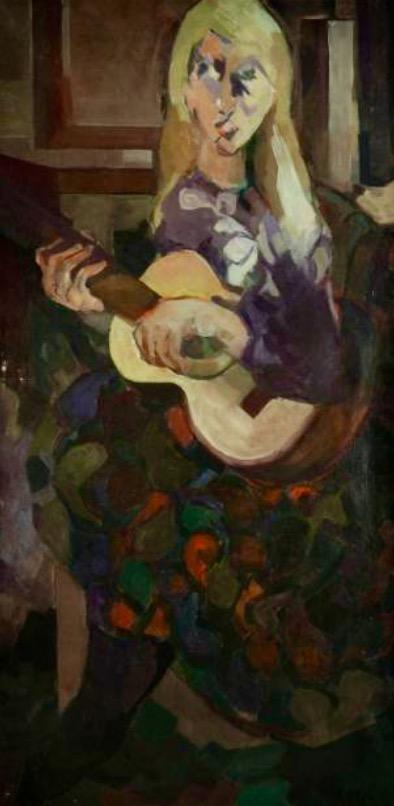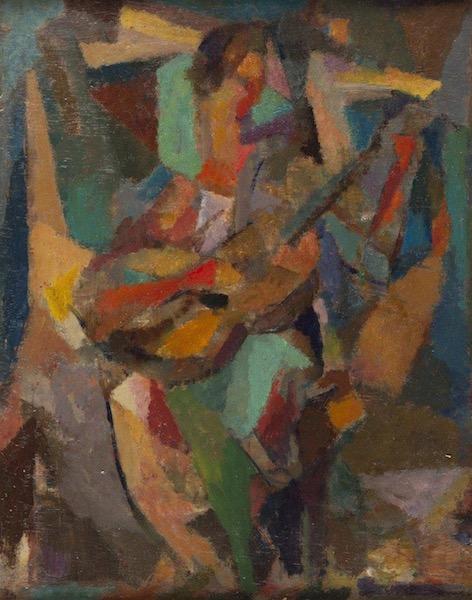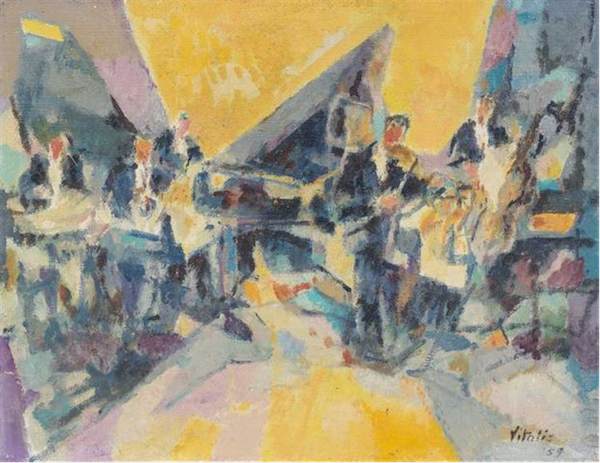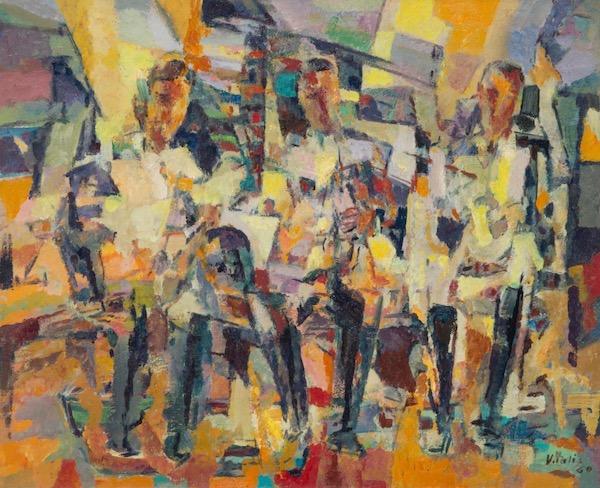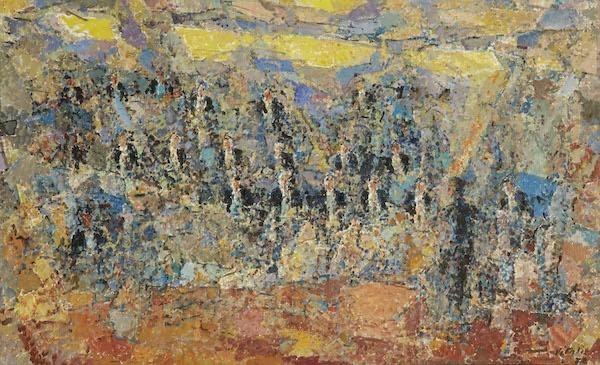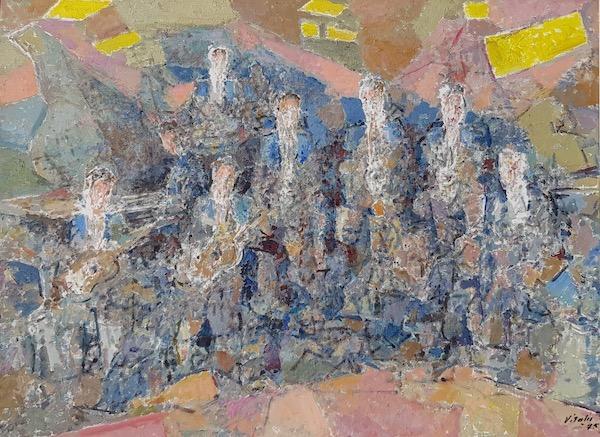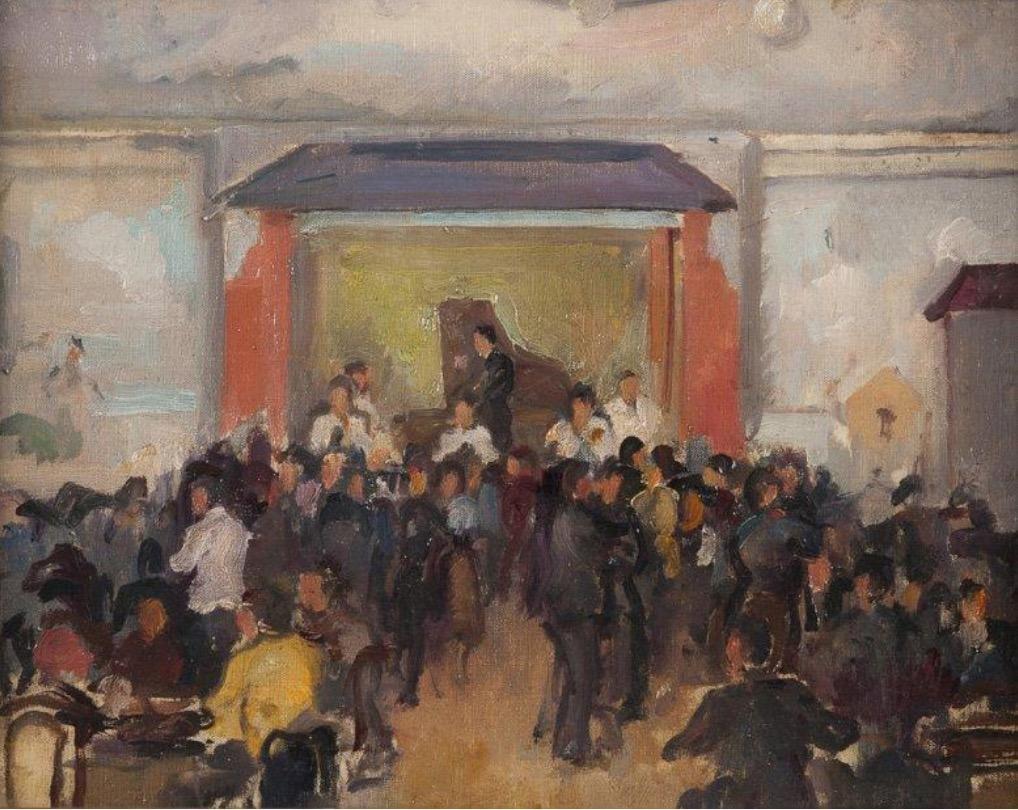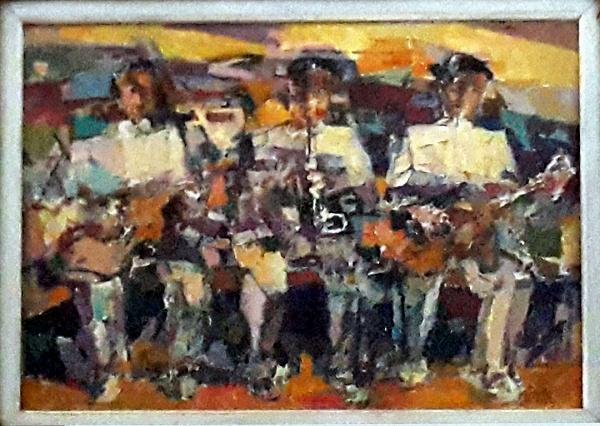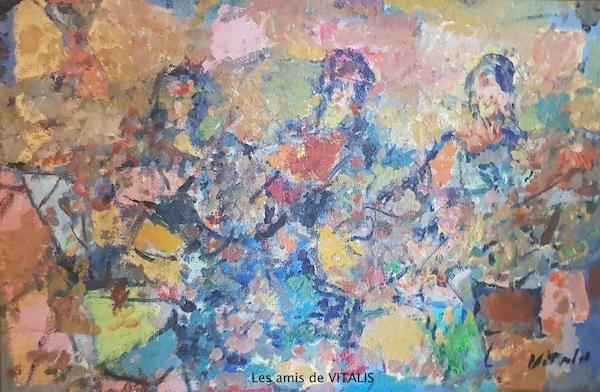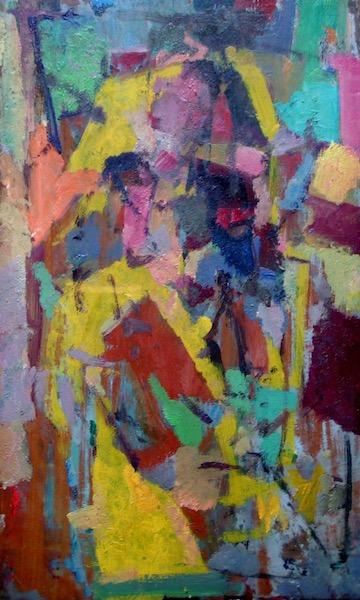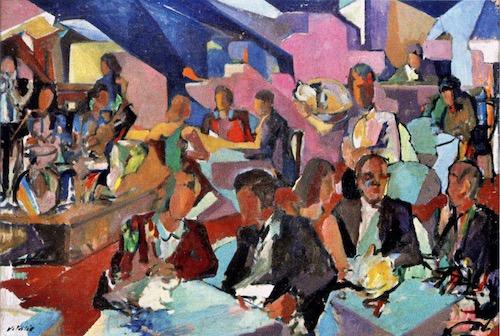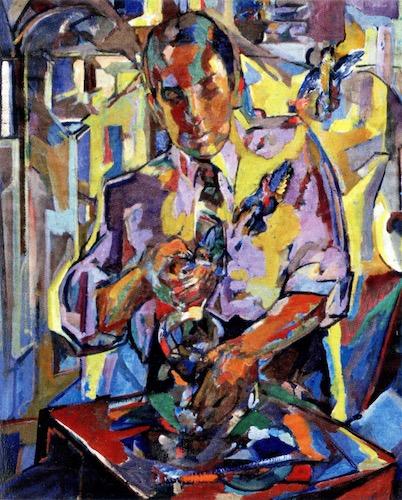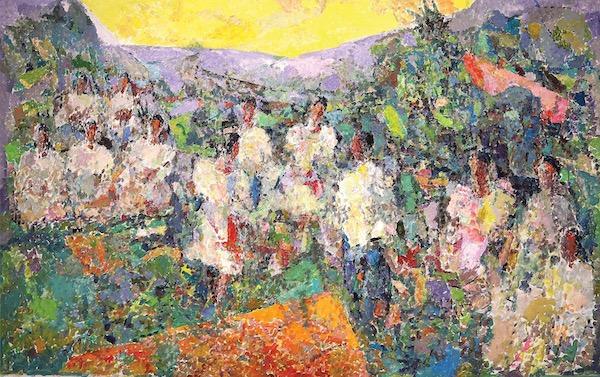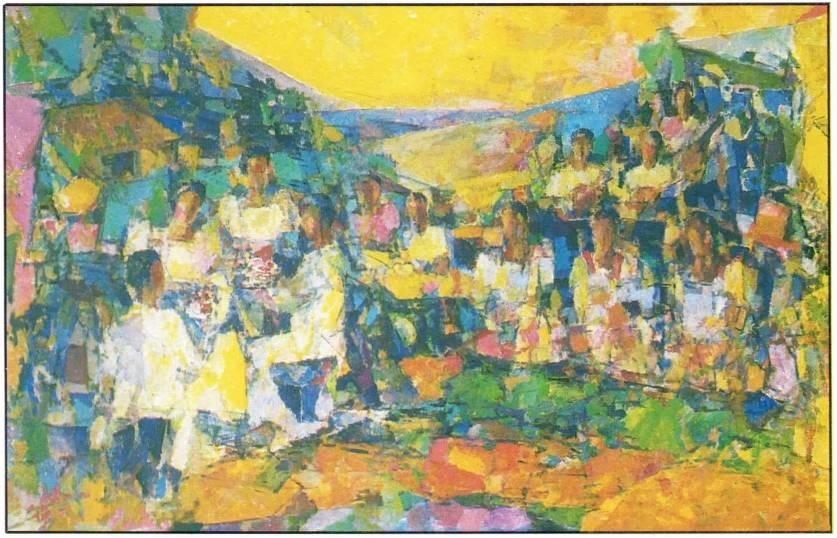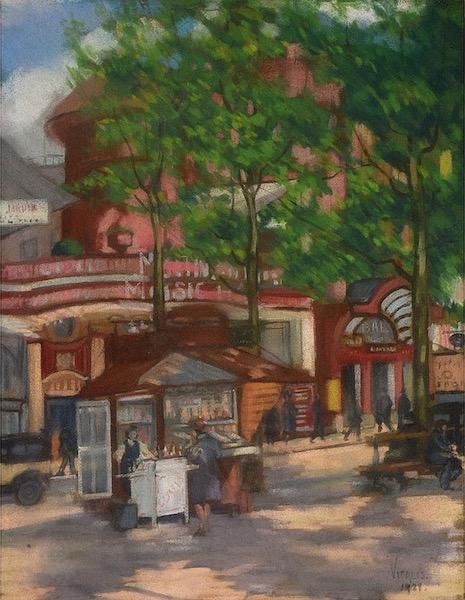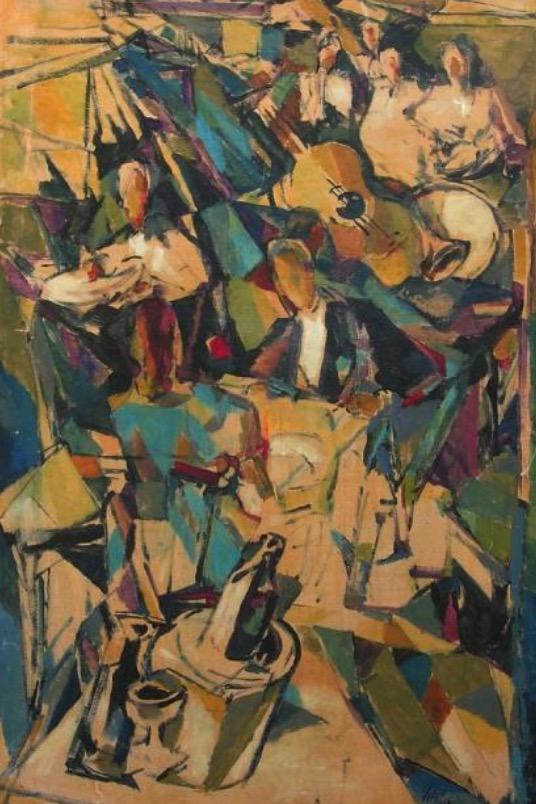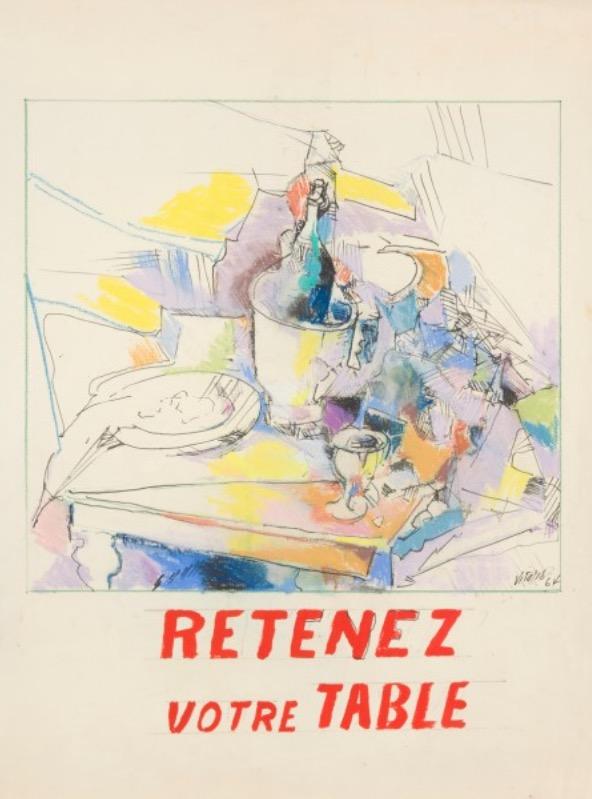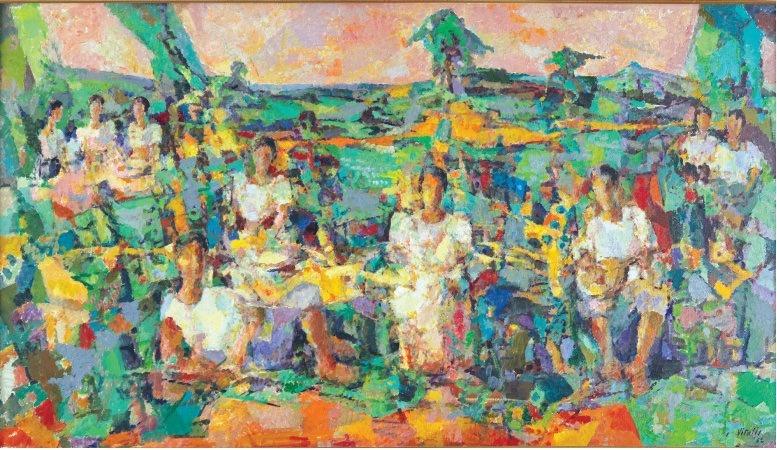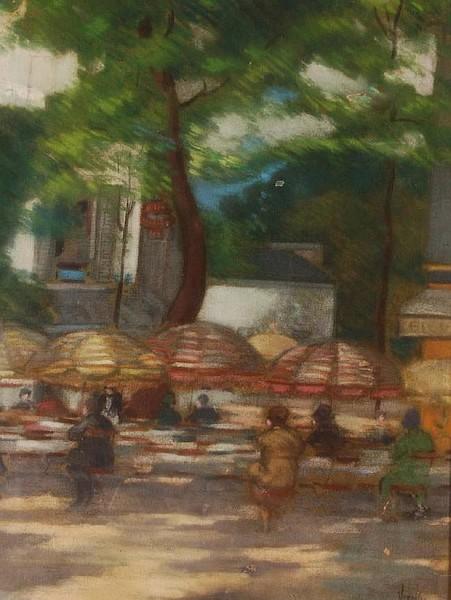
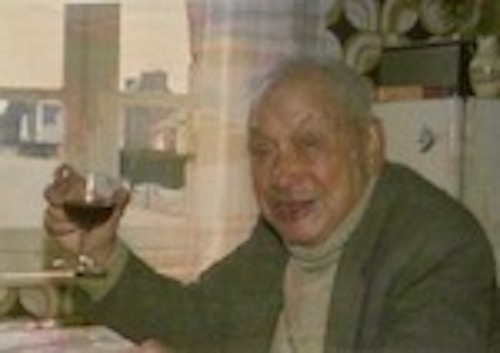
Has yours !
Dance, music, ideally in a festive atmosphere: VITALIS represented these themes with talent and sensitivity
VITALIS has created many works on these three themes: Dance, Music and festive scenes in restaurants. This could be due to his childhood: don’t we say that the Filipinos are the troubadours of Asia ?
Dance
VITALIS’ paintings of dance are superb in colour, rhythm and movement. And it seems to have been a theme that inspired him at two specific times. Firstly, in the early 1950s, he takes us to balls where couples are dancing. The colours of these paintings are bright and bold, with juxtapositions of red, green and yellow (“Three couples of dancers”, “The ball”, “Ballroom dancing”). The cubist style lends itself well to the play of light from the ceiling spotlights, which cast their reflections on the dancers. This cubist style offers in particular the possibility of releasing the energy of a dance as well as the interaction of the two bodies involved in it (“Couple of dancers”)…
… and even more so when the rhythm seems livelier! The attitude of the legs and arms of the women dancing below expresses this rhythm perfectly, in more pastel tones, with the exception of this “Dance”, the most frenzied by the gestures and the exotic colours.
At the beginning of the 1960s, VITALIS plunged us into a more subdued world. No more festive atmosphere (except for the pointillist “French cancan”). Instead, we see choreographed dances (“The dance”, “Three dancers”), filled with a gracefulness that is rendered by the harmoniously raised arms.VITALIS also takes us into the studio of a ballet class (“Dancer”), like Degas but in a very different style. And as in all these paintings evoking dance, the colour yellow is often predominant.
Music
VITALIS enjoyed music. He got up at 4 a.m. every day and began to paint to the sound of music, with a penchant for classical music (see page 221 of Yves Coativy’s article). There is one instrument that he favoured in his representations: the guitar. Was this because of his musical taste or because of the form and posture inspired by this instrument? The four portraits of guitarists below tip the balance towards the second hypothesis. As in the case of the ballroom dancers, the cubist style favours the construction of the theme and the atmosphere of the painting, with the instrument, more or less disaggregated (rather less, in fact), at the centre. The face of the “Young Guitarist” is singular in the work of VITALIS, but it inevitably recalls Picasso.
The theme of music has also been taken up by VITALIS through orchestras. The one constant is that it is never easy to spot the instruments that make up this group of musicians. The viewer has to rely on the rounded shape of the saxophone’s bell, the characteristic curve of a guitar’s body or the back cover of a piano. And even the instrument of one’s choice in “The Orchestra” from 1975 is left to the viewer to imagine.
The party
VITALIS lived for almost 20 years in the restaurant-cabaret of Camille Renault, nicknamed “Big Boy” because of his corpulence (see the article “VITALIS and Camille RENAULT”). Located in Puteaux, this place gathered the cultural “Tout-Paris” of the time and was bubbling with life. VITALIS retranscribed this atmosphere (50’s) in paintings of great quality, by their colour and their style. The cabaret hosted shows, including the superb “Magician” (1958), which is one of VITALIS’ masterpieces. Anecdotes abound about VITALIS’s taste for big parties (such as “La fête” and its female character carried “cubically” in the air?) In Plestin, for example, it happened several times, when he had made good sales, to invite his faithful friends around a suckling pig until late at night (see the page “Video Photos”). Another aspect in a different pictorial style: the paintings representing the “Bayanihan” (folklore troupe) or the “Barrio fiesta”. They transport us to the Philippines. They correspond to a particular sequence of life for VITALIS: his return to his native country in 1962, 48 years after having left it.
Diner chez Camille Renault – hst – vers 1950
« Dîner chez Camille Renault
» marque l’apogée de ses années parisiennes où il travaillait dans un restaurant qui exposait fièrement ses peintures sur ses murs. Issu d’un des thèmes favoris des impressionnistes, c’est une œuvre vivante,
pleine d’esprit et des énergies renouvelées de la France de l’après-guerre. L’atmosphère de convivialité chaleureuse est rendue par les roses, les jaunes francs et les tonalités changeantes qui reprennent l’intérêt
impressionniste pour les reflets et les ombres, tout en conservant une définition claire. –
Texte d’Alice V. Guerrero-Guillermo
Le magicien – hst – 1958
“le pinceau crée de nombreux petits mouvements, rapides comme la pensée, qui capturent le tour de passe-passe des oiseaux se matérialisant soudainement dans l’air. Les tons dorés changeants donnent un air à la fois rare et précieux en même temps qu’ils évoquent l’alchimie de la métamorphose continuelle.” –
Texte d’Alice V. Guerrero-Guillermo
La boule de cristal – hsp – NC
Barrio fiesta – hst – 1964
Danseurs Bayanihan – hst – 1963
« Les danseurs Bayanihan
» propose une scène dans laquelle toute la troupe est réunie pour l’offrande florale à la danseuse vedette. Les petites taches de couleur transparentes créent un effet scintillant.-
Texte d’Alice V. Guerrero-Guillermo
